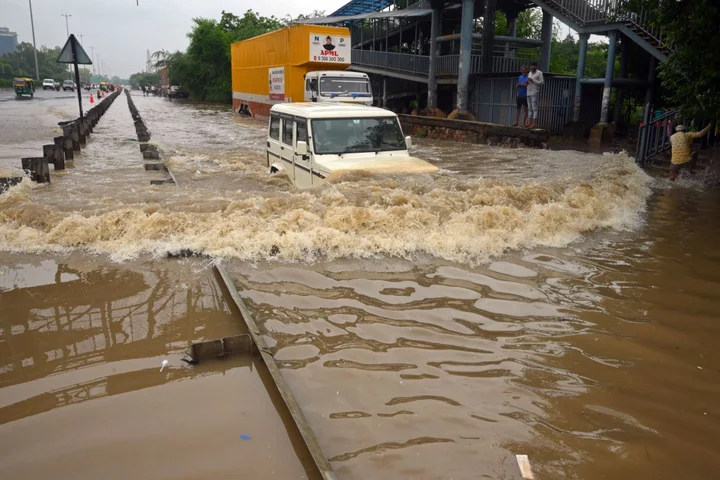India is facing the prospect of further torrential rainfall across swathes of the country over the coming days, increasing the risk of widespread damage after the wettest New Delhi day in four decades left millions wading through knee-deep water on Sunday.
Across the nation’s north, 19 people have been killed in the deluge, according to Press Trust of India. On social media, users shared dramatic footage of landslides, flash floods tearing through villages and rivers raging in Himachal Pradesh, one of the worst-hit states that witnessed the heaviest rainfall in 50 years. In the country’s capital, shared images showed city streets turned into fast-moving waterways.
Safdarjung Observatory, the main weather station in Delhi, recorded 153 millimeters (6 inches) of rain in a 24-hour period ending at 8.30 a.m. on Sunday, the highest for a single day in July since 1982, raising water levels in the Yamuna river. The station reported 110 millimeters of precipitation in the next 24 hours, prompting the state to shut schools, while local officials sought to evacuate those living near the water. Delhi Chief Minister Arvind Kejriwal said on Sunday that 15% of total rain for the monsoon season fell in 12 hours.
“As per our calculations, it seems that by tomorrow morning, the water level of river Yamuna will cross the danger mark,” Atishi Marlena, Delhi’s Public Works Department Minister, said on Monday. “We are monitoring the flow of water in case the rainfall continues.”
The India Meteorological Department has predicted heavy to very heavy rainfall in the next two days in most parts of northern India, including the Western Himalayan region, Punjab, Haryana-Chandigarh-Delhi, Rajasthan and Uttar Pradesh. The weather agency has issued a red alert for Himachal Pradesh and a yellow alert for Delhi, Rajasthan and Uttar Pradesh.
The IMD uses red alerts to signal dangerous weather that could create heavy damage. A yellow notification is used to alert the population and make them aware of an upcoming threat.
Read More: India’s June Heat Wave Deaths Are a Harbinger of Worse to Come
In neighboring Pakistan, at least 80 people have been killed since June 25 in monsoon-related incidents, according to the country’s National Disaster Management Authority. The nation’s meteorological department has forecast heavy rains in capital Islamabad and other provinces on Monday.
India is one of the countries most vulnerable to climate change, with altering weather patterns making extreme events more frequent and even regular monsoons, vital to the nation’s agriculture, harder to predict. July’s deluge follows months of blistering heat. India has seen maximum temperatures reach above 45C (113F) for at least eight consecutive years through 2023, weather department data shows.
(Updates to add details in seventh paragraph.)

